Davies Symphony Hall in San Francisco 
It was completed in September, 1980 after more than two years of construction
- Architect Company: Skidmore, Owings & Merrill
- Structural Engineer: Juri Komendant
- Acoustic Designer: Lawrence Kierkegaard
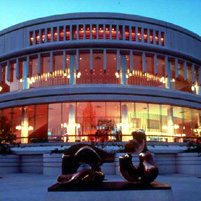
- The front round exterior resembles a gigantic piano keyboard with green glass walls.
- When the lights illuminate from inside of the concert hall, the movements or visual "rhythms" created by the concert goers in the lobbies can be seen from the outside, which creates the illusion that the gigantic piano keyboard is being played.
- The whole structure is fan-shaped with a side entrance.
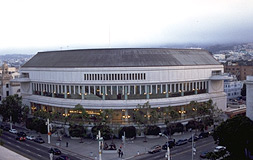
- Henry Moore's sculpture is in the front.
Interior:
- The vertical strips of mirrors on the walls in the 3-level lobbies
echo the exterior piano keyboard; the red carpets in the hallways create attractive contrast with the green glass walls.
- There are 2,743 seats in the concert hall.
- 88 FRP (fiberglass reinforced plastic) wall panels inside the concert hall are the key elements which create good acoustics.
- Mounted onto massive steel trusses, the walls are intended to
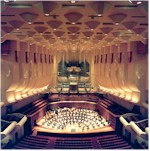
"close in" the space around the orchestra and direct the sound to the audience and the musicians.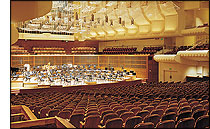
- Hollow steel tubes are bonded to fiberglass skin and filled with sand to form the acoustical panels.
- The panels are reinforced by plastic-covered steel tubes filled with sand to reduce vibration. The less vibration, the less absorption of sound.
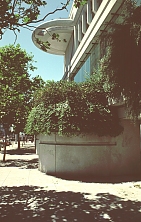
- The stage wooden walls with built-in Schroeder acoustic diffusers reflect the sounds at varying rates, prolonging reverberation time.
- The 59 acrylic panels, each weighs 111 pounds, are suspended from
steel cables to form a tunable canopy to improve sounds for the orchestra.
- These transparent panels can be individually raised, lowered, or tilted via computer controls to highlight sections of the orchestra.
- People often refer to these shiny panels as "sound clouds" which seem to float above the stage.
- The shallow curve of each panel distributes sound evenly in all directions. Angled front panels direct sounds into the audience.
- The fabric panels along the walls can be lowered or lifted by the computer to accommodate the acoustics.
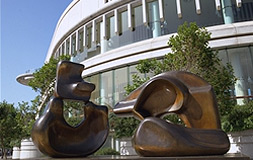
- The addition of aesthetic enhancements of cherry
veneer seats with end panels and plush mohair fabric
seats has helped to reduce the amplification levels to
achieve the best acoustic effects.
Photo Credit: Jim Woollen, Craig Mole, Mary Ann Sullivan, kreysler.com & theatersolutions.net
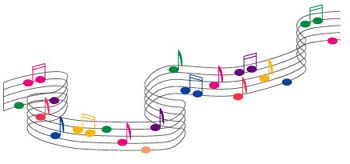
References:
Davies Symphony Hall in San Francisco:
http://www.sfwmpac.org/symphonyhall/sh_index.html
http://www.kreysler.com/projects/davies/davies.htm
Photos: http://www.bluffton.edu/~sullivanm/somsf/somdavies.html
Home <<< >>> Sydney Opera House








